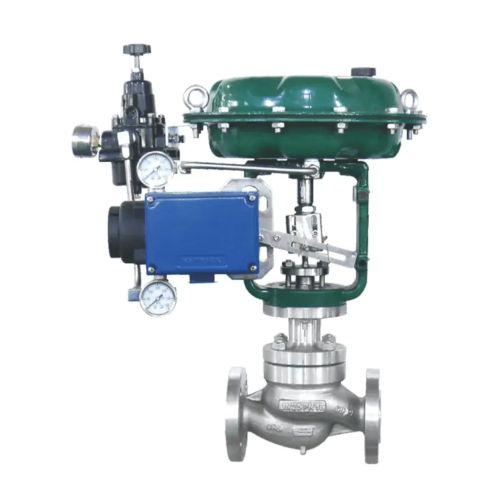


Pneumatic Control Valves vs. Self-Operated Control Valves: A Comprehensive Comparison
Pneumatic Control Valves vs. Self-Operated Control Valves: Key Differences and Applications
Introduction
We are a leading control valve manufacturer in China, delivering high-quality valves and control actuators designed to meet a wide range of industrial applications.
In process automation and fluid control, selecting the right control valve is essential for safety, efficiency, and system performance. Two commonly compared types are pneumatic control valves and self-operated control valves. Each has unique features, advantages, and limitations. Understanding their operation, design, and application helps in making the best choice for specific industrial needs.
What Is a Pneumatic Control Valve?
A pneumatic control valve uses compressed air as its power source. It consists mainly of a valve body and a pneumatic actuator. This valve regulates flow, pressure, temperature, or level by receiving control signals—usually from a central system like a Distributed Control System (DCS) or Programmable Logic Controller (PLC).
The control signal (commonly 4-20 mA or 0.2-1 bar) commands a positioner, which adjusts the actuator to move the valve plug, changing the flow path and controlling the process variables accurately.
Key Features:
Requires external compressed air and control signals.
Rapid response and high precision.
Suitable for dynamic processes needing frequent adjustments.
What Is a Self-Operated Control Valve?
Self-operated control valves function without external power or signals. They harness the process medium’s own pressure or temperature to modulate the valve opening automatically. Equipped with diaphragms or bellows, they react to process changes and adjust flow accordingly.
These valves are simple, reliable, and ideal for applications where precise control isn’t critical, or where external utilities like air or power are unavailable.
Key Features:
No external power or instrumentation required.
Uses process pressure or temperature as the driving force.
Best for stable, infrequently adjusted systems.
Common in pressure reducing or relief applications.
Comparison
Power and Control
Pneumatic valves need compressed air and control signals, allowing remote, automated operation.
Self-operated valves use the medium’s own energy, working autonomously without external inputs.
Accuracy
Pneumatic valves offer high accuracy (±0.3% to 0.5%).
Self-operated valves have lower accuracy (±5% to 10%) due to mechanical limitations.
Adjustment
Pneumatic valves enable remote, real-time setpoint changes.
Self-operated valves require manual, on-site adjustments, limiting flexibility.
Installation and Maintenance
Pneumatic valves need air supply, wiring, and regular maintenance of actuators and positioners.
Self-operated valves are easier to install, need minimal infrastructure, and have low maintenance.
Design Considerations
Pneumatic valves can be installed in varied orientations.
Self-operated valves require specific layouts for proper sensing (e.g., steam applications need downward installation with condensate protection).
Typical Applications
Pneumatic: chemical plants, power generation, water treatment, HVAC, and complex automation loops.
Self-operated: pressure reduction, steam heating, lubrication, and remote gas pipelines.
When to Choose Which?
Choose Pneumatic Valves if:
You require precise, responsive control.
Your system supports automation infrastructure.
Remote monitoring and frequent adjustments are needed.
Choose Self-Operated Valves if:
The process is stable and adjustments are infrequent.
No external power or air supply is available.
You need a simple, cost-effective, low-maintenance valve.
Summary Table
| Feature | Pneumatic Control Valve | Self-Operated Control Valve |
|---|---|---|
| Power Source | External (Compressed air + signal) | Internal (Medium’s pressure/temperature) |
| Accuracy | High (±0.3% to 0.5%) | Lower (±5% to 10%) |
| Control Signal | Remote (DCS/PLC) | Local only |
| Adjustment | Dynamic, remote | Manual, on-site |
| Complexity | Higher | Simpler |
| Installation | Needs air supply and wiring | Minimal infrastructure |
| Maintenance | Regular maintenance required | Low maintenance |
Conclusion
Pneumatic and self-operated control valves both have important roles in industrial fluid control. Pneumatic valves deliver precision, flexibility, and automation compatibility, making them ideal for dynamic environments. Self-operated valves provide simplicity, reliability, and autonomy, especially where infrastructure is limited. Choosing the right valve depends on your process control needs, available infrastructure, and maintenance considerations, ensuring optimal system performance and safety.Know more about Google SEO Directory
